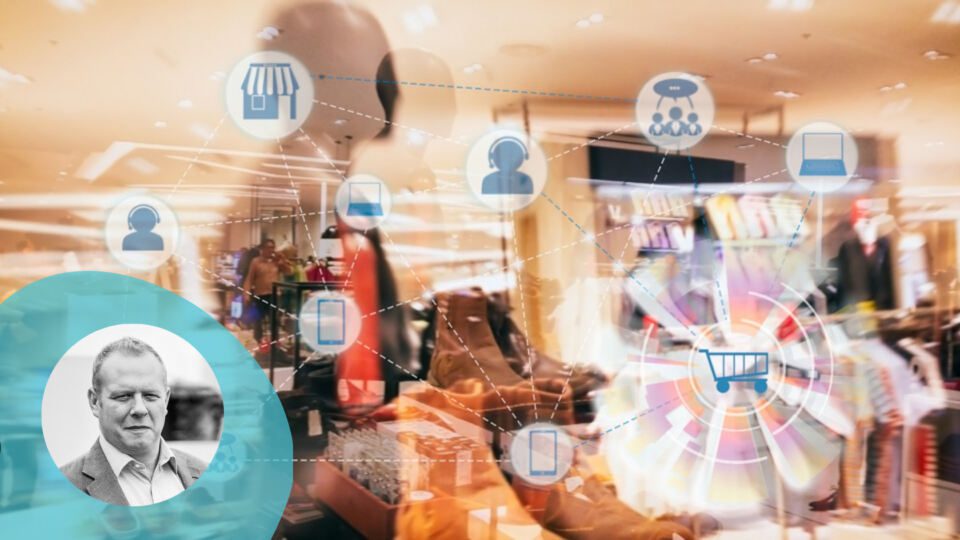It’s no secret that smartphones, social media and ecommerce marketplaces have dramatically changed how customers shop online. This shift has left even the largest retailers scrambling to meet customer expectations.
Many retailers built their ecommerce foundation on legacy “everything-in-one” platforms connected to antiquated systems that were designed to support in-store and distribution channels. These legacy technologies are often inflexible and require costly customizations for even the smallest changes. That leaves brands with no choice but to pile on complexity and point solutions to deliver must-haves like product recommendations, social shopping and loyalty programs.
The rapidly evolving technology landscape and escalating customer demands require a more flexible framework — one that gives retailers the opportunity to create truly unique branded shopping experiences and meet shoppers’ wants and needs in every channel. In response, a growing number of retailers are turning to a modern, headless approach and rebuilding their commerce strategy.
What is Headless Commerce?
To enable consumers to interact with retail brands across multiple channels, developers introduced the concept of “headless commerce.” Headless decouples the front and back ends, eliminating the need to redesign the ecommerce experience for each channel. Instead, developers build or buy new front ends and use APIs to connect them to the monolithic back end, where transaction processing and other commerce logics reside.
The modern version of headless commerce is often referred to by the acronym MACH (Microservices, API-First, Cloud Native and Headless), and it takes a best-of-breed approach to the commerce tech stack. Rather than extending their full-featured legacy ecommerce platforms, brands can adopt newer, more flexible technologies that are ideally suited to their business while building unified experiences with a shared experience management platform.
Benefits of Headless
A modern headless approach to commerce can help retailers create a unique multichannel shopping experience and evolve it as their brand and customer requirements change. It also gives development teams more freedom, both to combine existing best-of-breed solutions and to develop custom solutions in whichever programming language they prefer.
Despite its many benefits, headless commerce isn’t for every company. Businesses that reap the advantages tend to be large and growth-focused, with commerce capabilities across multiple channels, a commitment to first-rate customer experience (CX) and a determination to reduce IT workload and cost.
Five Steps to Headless Migration
If you’ve determined that headless commerce is right for your business, migration should be a partnership between business and IT teams. Begin with a plan identifying which features and data to transition to the headless platform and when.
Start with key areas like mobile and web content pages, where you can show value quickly. Then you can migrate more complex features like payments or shipping. At a high level, a plan to take you from monolithic to modern headless should include these steps:
1. Define a purpose, and get business buy-in.
This may seem simple, but defining a purpose and aligning teams will ensure a path to success. You need to know what problems you’re trying to solve from a business and/or experience perspective and what internal and external features are critical for the business and technical teams.
2. Conduct a discovery and gap analysis.
Take stock of existing platforms and tools and what the current platform supports. Then determine the features you’ll need to create a unified customer journey.
3. Build the migration roadmap.
Focus on migrating technologies that combine the least risk with the highest impact on customer experience, or start with an isolated project and expand to other business areas or channels.
4. Define a data standard.
Whether you’re creating a homepage design or an order record, build a standard for modeling and consuming data with help from your IT and design teams. Keep both the experience and internal business processes in mind.
5. Import, test and update.
Determine which data pieces, content or elements can be automatically migrated and which need to be entered manually. Then test the customer experience and the internal business process to ensure your new features meet both sets of requirements. Continue to update, if needed.
With modern headless commerce, retailers can quickly create compelling digital experiences. Uniting the physical and digital worlds and exciting customers every time they connect with your brand will increase loyalty and profitability at every touch.
James Brooke is the Founder and CEO of Amplience.




